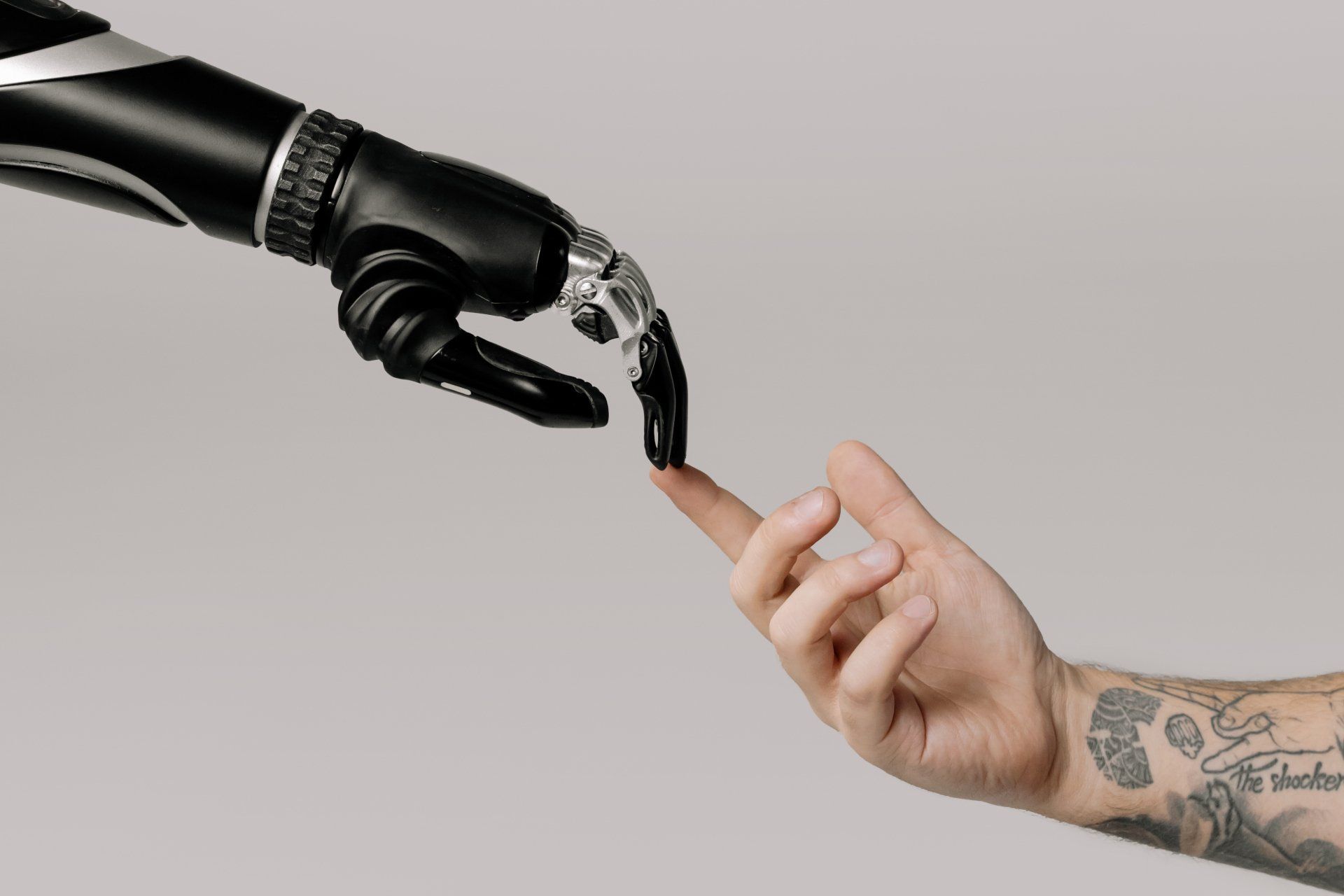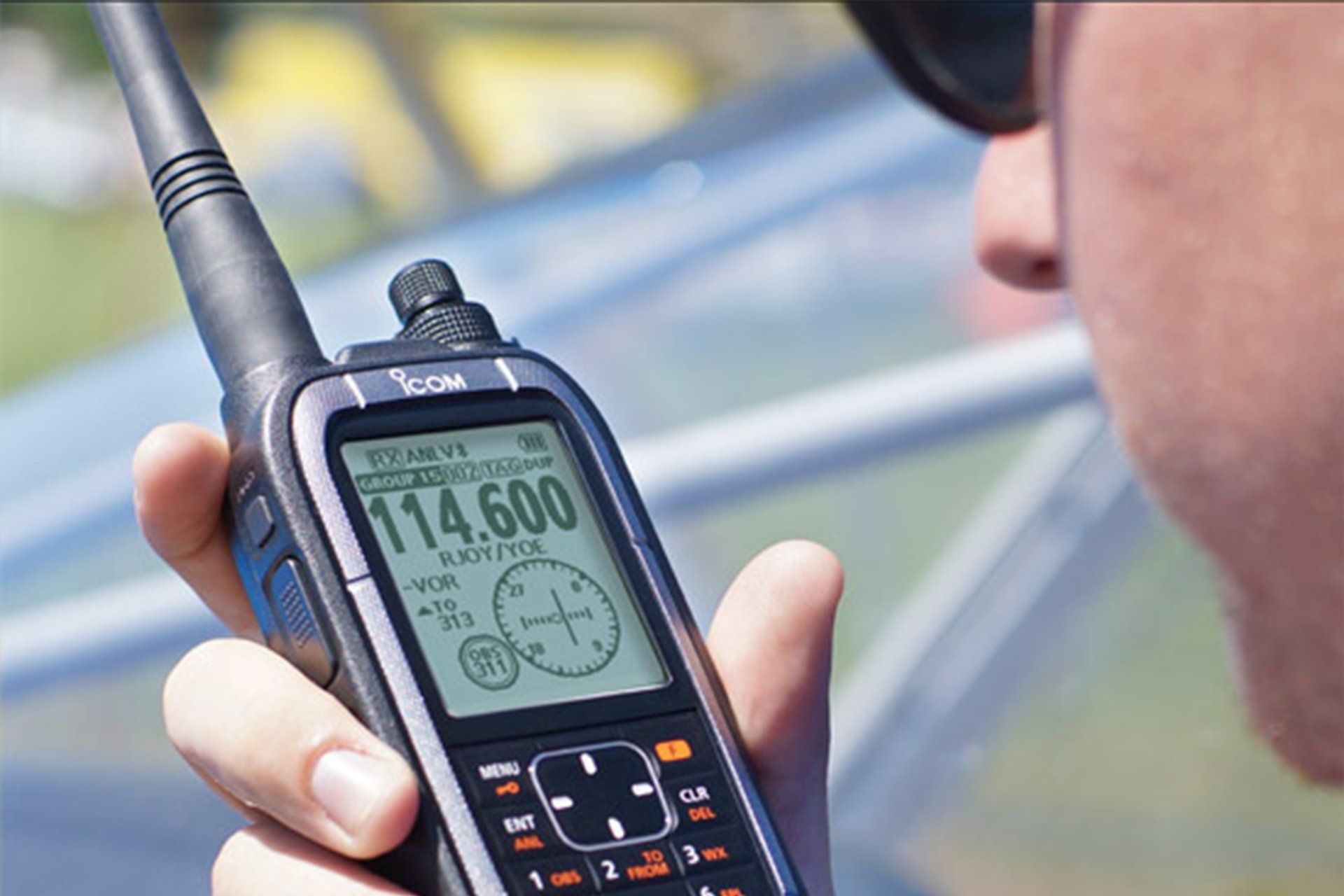5 Fastest Growing Drone Industries of 2023
5 Fastest Growing Drone Industries of 2023

Drones have come a long way since their inception and are now being used in various industries. While drone dog walking hasn't been perfected (yet), their ability to capture aerial footage, monitor crops, and conduct surveys has made them an indispensable tool for many businesses. In recent years, the drone industry has experienced tremendous growth and is expected to continue growing at an unprecedented rate in 2023. In this article, we will explore the fastest-growing drone industries of 2023.
1. Agriculture
The drone industry has experienced massive growth in recent years, with various sectors adopting the technology to improve efficiency and productivity. However, one industry that is rapidly embracing the use of drones is agriculture.
The agriculture industry is expected to be the fastest growing drone industry in 2023. According to a report by PwC, the agriculture drone market is expected to grow at a compound annual growth rate (CAGR) of 32.4% between 2018 and 2023, reaching a market value of $4.2 billion by the end of 20231.
The use of drones in agriculture is transforming the way farmers approach crop management, with the technology enabling them to gather critical data that helps them make informed decisions. Farmers are using drones to monitor crop health, map fields, assess soil quality, and plan irrigation and fertiliser applications.
One of the most significant benefits of using drones in agriculture is that they can provide real-time data on crop health, enabling farmers to detect crop stress, diseases, and nutrient deficiencies. Drones equipped with specialised cameras and sensors can capture high-resolution images and analyse them using machine learning algorithms to provide detailed insights into crop health.
Drones are also being used to map fields and generate accurate 3D models that provide farmers with a better understanding of their fields' topography and soil quality. This information can help farmers plan irrigation and fertiliser applications more effectively, resulting in increased crop yields and reduced water and fertiliser usage.
Another significant advantage of using drones in agriculture is that they can help farmers save time and reduce labour costs. In the past, farmers had to walk through their fields to inspect crops manually, which was time-consuming and often inaccurate. With drones, farmers can cover large areas of their fields in a fraction of the time it would take to do it manually, saving time and reducing labour costs.
In addition, drones are also being used for precision agriculture, which involves using data and technology to optimise crop production while minimising inputs such as water, fertiliser, and pesticides. Precision agriculture can help farmers improve crop yields, reduce waste, and minimise the impact of agriculture on the environment.
Overall, the use of drones in agriculture is transforming the way farmers approach crop management, enabling them to make data-driven decisions that result in increased yields, reduced costs, and minimised environmental impact. As a result, the agriculture drone market is expected to experience significant growth in the coming years, making it one of the fastest growing drone industries in 2023.
Droneit is an authorised DJI Enterprise reseller. Talk to us about purchasing drone + training bundles
2. Construction and Inspection
The construction industry has historically been slow to adopt new technologies, but the increasing use of drones is changing that. With the ability to survey construction sites, map out terrain, and create 3D models, drones are streamlining the construction process and reducing the need for manual labour. In this article, we will explore how the construction industry is embracing drones, and how their use is set to revolutionise the industry.
The construction industry is one of the largest industries in the world, with a global market size of over $10 trillion. Despite this, the industry has been slow to embrace new technologies. However, the adoption of drones is changing that. Drones can provide a range of benefits to the construction industry, from surveying sites to monitoring safety hazards. They can also increase efficiency, reduce costs, and improve overall project management.
One of the primary uses for drones in construction is site surveying. By using drones equipped with cameras and sensors, construction companies can quickly survey large areas of land and create accurate maps of the terrain. This can be especially useful for projects in remote or difficult to access locations. By reducing the need for manual surveying, drones can significantly reduce the time and cost associated with site surveys.
Drones can also be used to create 3D models of construction sites. By using photogrammetry software, drones can capture high-resolution images of construction sites and generate accurate 3D models. This can be invaluable for architects and engineers, as it allows them to view the site from all angles and make more informed design decisions. It can also help project managers identify potential issues before they become costly problems.
Another benefit of drones in construction is their ability to monitor sites for safety hazards. Drones equipped with cameras and sensors can provide real-time updates on site conditions, allowing project managers to quickly identify potential hazards and take appropriate action. This can help prevent accidents and reduce the risk of injuries on construction sites.
As the demand for affordable housing and infrastructure projects grows, the construction industry will increasingly turn to drones to streamline their operations. Drones can help reduce costs and increase efficiency, making construction projects more affordable and accessible to a wider range of clients. They can also help reduce the environmental impact of construction, by reducing the need for heavy machinery and manual labour.
Infrastructure such as bridges, roads, railways, power lines, and pipelines require regular inspection to ensure their safety and maintenance. Traditionally, these inspections were done manually by human inspectors, which can be time-consuming, costly, and risky. However, drones equipped with high-resolution cameras, LiDAR sensors, and thermal imaging cameras can quickly and safely inspect infrastructure from the air, providing real-time data and insights.
Drones can access hard-to-reach areas, such as bridges and power line towers, without the need for human inspectors to physically climb or access dangerous locations. Drones can capture high-quality images and videos of infrastructure, which can be further analysed to detect defects, cracks, corrosion, or other damages. They can also use LiDAR sensors to create accurate 3D models of infrastructure, enabling engineers to assess their condition and plan necessary repairs or maintenance work.
The use of drones in infrastructure inspection can significantly reduce inspection time and costs, increase safety by minimizing human exposure to hazardous environments, and improve the accuracy and quality of inspection data. As a result, the demand for drones in infrastructure inspection is expected to grow rapidly in 2023 and beyond, making it one of the fastest growing drone industries.
Drones are revolutionising the construction and inspection industry. With their ability to survey sites, create 3D models, and monitor safety hazards, drones are reducing the need for manual labour and increasing efficiency. As the industry continues to grow, drones will play an increasingly important role in streamlining construction processes and making projects more affordable and accessible.
3. Emergency Services
Drones are revolutionising emergency services by providing critical support in search and rescue operations, disaster response, and firefighting efforts. With their ability to quickly navigate through challenging environments and capture real-time data, drones are becoming an integral part of emergency services, saving lives and minimising risks. In this article, we will explore how drones are transforming the emergency services industry and becoming one of the fastest-growing sectors in 2023.
Drones equipped with thermal cameras and high-resolution imaging capabilities are becoming essential tools in search and rescue operations. They can quickly locate missing persons in vast areas such as forests, mountains, or disaster-stricken zones where traditional search methods may be limited. Thermal cameras can detect body heat signatures, making it easier to locate individuals who may be hidden or unconscious.
Moreover, drones can access areas that are difficult for humans to reach, such as collapsed buildings, caves, or dangerous terrains. They can be deployed quickly, providing immediate situational awareness to rescuers and helping them make informed decisions. Drones can also transmit live video feeds, allowing the incident commanders to assess the situation and allocate resources effectively. By reducing search time and improving efficiency, drones are playing a crucial role in saving lives in search and rescue missions.
During natural disasters such as hurricanes, earthquakes, or floods, drones can rapidly assess the extent of the damage and help emergency responders plan their response. Drones can capture high-resolution aerial images and create detailed maps of affected areas in real-time. These maps can provide valuable information on the condition of critical infrastructure, such as roads, bridges, buildings, and utility networks. This data helps emergency management agencies to prioritise their resources, plan evacuation routes, and coordinate relief efforts effectively.
Furthermore, drones can monitor ongoing disasters, such as wildfires, in real-time. Equipped with thermal cameras, drones can detect hotspots, track fire movement, and provide crucial information to firefighters on the ground. This data helps firefighters make informed decisions about where to deploy their resources and how to contain the fire. Drones are significantly reducing response time and improving the safety of emergency responders in disaster scenarios.
Drones are also transforming firefighting operations by providing enhanced situational awareness and improving safety for firefighters. Drones equipped with thermal cameras can detect hotspots and map the spread of a fire, allowing firefighters to identify areas that need immediate attention. Drones can also monitor fire behaviour, such as wind direction and speed, which helps in predicting fire movement and containment strategies.
In addition, drones can assess the structural integrity of buildings during a fire, providing critical information to firefighters on the ground. This data helps them make informed decisions about where to enter a building, where to focus their efforts, and when to evacuate. Drones can also deliver essential supplies, such as water or medical kits, to firefighters in remote or inaccessible locations.
The adoption of drones in firefighting operations is increasing the efficiency and safety of firefighters, reducing the risks associated with traditional firefighting methods and improving the overall outcomes of firefighting efforts.
As the demand for emergency services continues to grow, drones are increasingly becoming essential tools for search and rescue, disaster response, and firefighting operations. Their ability to quickly access remote and hazardous areas, capture real-time data, and provide situational awareness is transforming the emergency services industry. Drones are improving the efficiency of operations, reducing response time, enhancing safety for emergency responders, and ultimately saving lives.
In 2023, the drone industry is projected to experience significant growth in the emergency services sector.
Droneit is an authorised DJI Enterprise reseller. Talk to us about purchasing drone + training bundles
4. Media and Entertainment
Drones have become increasingly popular in the media and entertainment industry as they offer unique aerial perspectives that were previously impossible to capture. With drones, filmmakers, and videographers can now capture stunning footage of landscapes, events, and sports. Drone technology has enabled content creators to explore new angles, heights, and perspectives, which enhances the viewer's experience.
One of the significant benefits of using drones in the entertainment industry is the ability to capture high-quality aerial footage without the need for expensive equipment or specialised teams. A drone equipped with a high-resolution camera can capture cinematic-quality footage, which was previously only possible with helicopters or cranes. This shift in technology has democratised the film and television industry, making it accessible to a broader range of professionals and amateurs.
The use of drones in the entertainment industry is not limited to film and television production. Music videos and live events, such as concerts and festivals, are increasingly incorporating drone technology to capture unique perspectives and enhance the viewer's experience. The ability to fly a drone close to a stage or artist can create dynamic and immersive footage that makes viewers feel like they are part of the action.
The sports industry is another area that is benefiting from drone technology. Drones are being used to capture footage of sporting events, races, and other outdoor activities, providing a unique perspective that was previously unattainable. Drones can follow athletes and vehicles through challenging terrain, creating dynamic footage that enhances the viewer's experience.
The demand for immersive experiences in the entertainment industry continues to grow, and drones are poised to become a staple tool in content creation. With the development of new technologies such as virtual and augmented reality, the use of drones in the entertainment industry is expected to grow further.
One of the significant advantages of drones is their versatility. Drones can be customised to meet specific requirements, such as lifting heavy equipment or flying in harsh weather conditions. As the technology advances, drones will become even more versatile, enabling content creators to capture footage in new and exciting ways.
Moreover, drones are being used in other areas of the entertainment industry, such as theme parks and attractions. Theme parks are incorporating drones into their shows and attractions, creating a more immersive and engaging experience for visitors.
The use of drones in the entertainment industry is not without its challenges. Drone regulations, safety concerns, and privacy issues are among the factors that need to be addressed. However, as the technology advances, regulations and safety protocols will evolve to ensure the safe and responsible use of drones.
Drones are revolutionising the media and entertainment industry, providing unique aerial perspectives that were previously impossible to capture. Drones equipped with high-resolution cameras are changing the way we capture images and collect data, and the demand for immersive experiences continues to grow. As the technology advances, drones will become even more versatile, enabling content creators to capture footage in new and exciting ways. The use of drones in the entertainment industry is expected to continue growing, enhancing the viewer's experience and changing the way we consume media.
Droneit is an authorised DJI Enterprise reseller. Talk to us about purchasing drone + training bundles
5. Delivery
The delivery industry is being transformed by drones, with companies like Amazon and Wing experimenting with drone delivery services. Drones can deliver packages quickly and efficiently, reducing delivery times and costs. As the demand for instant gratification continues to grow, the delivery industry will increasingly turn to drones to meet the needs of consumers.
Wing, a subsidiary of Alphabet (Google's parent company), is one of the companies leading the way in drone delivery services. They are currently operating in select areas of Australia, including Canberra and Logan, and have plans to expand to other locations in the near future. Their drones are capable of delivering a variety of products, including fresh food, drinks, and over-the-counter medication.
Drone delivery services are also gaining popularity in regional areas. An Australian tech startup, Swoop Aero, is working with TerryWhite Chemart and Symbion, Australia’s largest healthcare wholesaler, to deliver medical supplies, such as vaccines and blood samples, to remote communities.
Drone delivery services are revolutionising the delivery industry in Australia. Wing, along with other companies, is leading the charge in offering faster and more efficient delivery services while reducing the impact on the environment. As technology continues to advance, we can expect to see more companies in Australia and around the world adopting drone delivery services as a viable option.
In conclusion, the drone industry is rapidly evolving, and these are just a few of the fastest-growing drone industries of 2023. As drone technology continues to improve, we can expect to see them being used in even more industries in the future. Drones will play a critical role in driving innovation and transforming industries, making them a valuable investment for businesses.

Share the story











